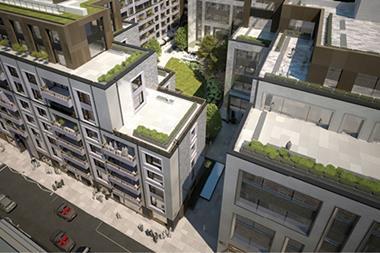The West End of London is one of the most vibrant and diverse districts of any world city. It generates 3% of the UK’s GDP, supports 610,000 jobs and is a premier retail and entertainment hub.

Despite the success, there is potential for significant future growth in the West End, especially with Crossrail due in 2018; however, achieving this growth is not straightforward. Sir Howard Bernstein, chair of the West End Commission in 2013, put his finger on two important things that are missing; coherent, incentivised governance and a vision for the future.
This is the reason the West End Partnership was formed about 18 months ago. For the first time, a broad coalition of interests was established in the West End, bringing the public and private sector together to address the biggest challenges.
Recently, the West End Partnership created and published its vision. In it, we argued there is no fundamental trade-off between economic growth, the creation of new jobs and enterprises and a better experience for those who live and work in the West End. If we are smart and work together, we can have both.
So what does success look like for the West End? First, we have the chance to transform Oxford Street with a radical plan to cut traffic; a policy framework that supports densification; and a planning approach that creates the world’s most exciting retail district with a greater sense of place for all users - workers, visitors, shoppers and residents.
Indeed, we have the chance to go further. Changes to Oxford Street can be the launch pad for reimagined districts north and south of it. At Grosvenor, we have begun a major new study into that opportunity and hope to publish our thinking early next year.
Second, we have the chance to bring central London’s digital infrastructure up to world-class standards with broadband speeds and mobile internet access that befit a global city. Today, the West End lags behind competing cities for average broadband speeds - Hong Kong, New York, Seoul, Paris, and even the City of London, which in turn has lower average speeds than Hounslow.
Third, we have the chance to string together a constellation of public realm improvements. This should build on standalone achievements to date such as Leicester Square and link them up across the West End with new walking routes, which in turn should bring new life to our streets with greater pedestrian freedom and sense of place.
To my mind, the West End should have the best and most inspiring public spaces of any world city - nothing less.
And finally, we have the chance, perhaps the best in some time, to create an exemplary public-private-partnership model. To bring about all these changes and more, this public-private partnership requires commitment. From Westminster and Camden councils, we need flexible and consistent planning policy, rolling back out-of-date regulation. The private sector, for its part, must be prepared to plough a proportion of value uplift back into the West End’s public realm and infrastructure. In turn, the Greater London Authority and Transport for London must pledge to deliver improvements.
If we have sufficient ambition and delivery, we will increase London’s competitiveness as a world city and create growth and jobs for Londoners from all walks of life right across
the capital.
Peter Vernon is deputy chair of the West End Partnership, board member of London First and chief executive officer of Grosvenor Britain & Ireland





























No comments yet